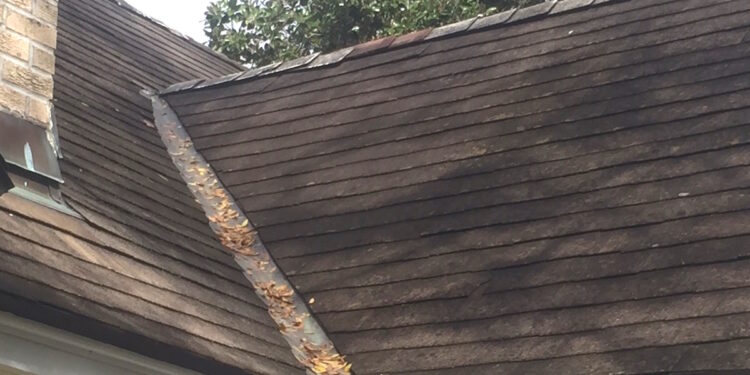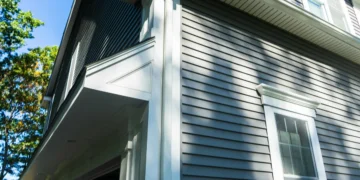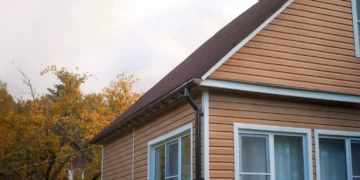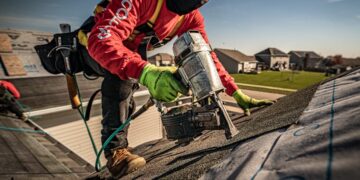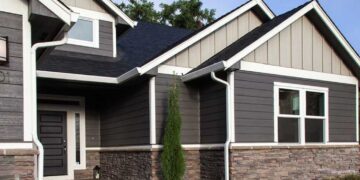Delving into the realm of asbestos shingles, this introduction aims to provide a comprehensive overview of this controversial roofing material. From its historical significance to the current concerns surrounding its use, this topic is both intriguing and complex.
Introduction to Asbestos Shingles
Asbestos shingles are building materials made from a combination of asbestos fibers and cement. These shingles were commonly used in the construction industry due to their durability and fire-resistant properties.
Historical Use of Asbestos in Building Materials
Asbestos has been used in construction for centuries, with its peak in popularity occurring in the 20th century. Its fire-resistant nature made it a desirable material for various applications, including roofing shingles.
Benefits and Drawbacks of Using Asbestos Shingles
Benefits:
-
- Excellent fire resistance, making buildings safer.
- Durable and long-lasting, reducing the need for frequent replacements.
- Good insulation properties, helping to regulate indoor temperature.
- Cost-effective compared to some alternative roofing materials.
Drawbacks:
- Health risks associated with asbestos exposure, leading to respiratory issues and cancer.
- Asbestos shingles can become brittle over time, leading to potential breakage and water leakage.
- Disposal of asbestos-containing materials can be hazardous and costly.
Properties of Asbestos Shingles
Asbestos shingles were a popular roofing material due to their unique properties that made them durable, fire-resistant, and weather-resistant.
Durability and Fire-Resistant Properties
Asbestos shingles are known for their exceptional durability, able to withstand harsh weather conditions and last for many years without deteriorating. Additionally, asbestos is a naturally fire-resistant material, providing added protection to buildings and homes.
Weather-Resistant Characteristics
Asbestos shingles have excellent weather-resistant characteristics, making them suitable for various climates and environments. They are able to resist moisture, UV radiation, and temperature fluctuations, ensuring the roof remains intact and functional over time.
Manufacturing and Installation
Asbestos shingles were manufactured by mixing asbestos fibers with cement or other binding materials to create a strong and sturdy roofing material. During installation, the shingles were typically nailed or glued onto the roof structure, providing a secure and reliable roofing system for the building.
Health and Safety Concerns
Asbestos exposure poses serious health risks to individuals, as it has been linked to various respiratory diseases, including lung cancer and mesothelioma. The inhalation of asbestos fibers can lead to long-term health complications, making it crucial to handle asbestos-containing materials with caution.
Regulations and Guidelines for Removal and Disposal
- There are strict regulations in place regarding the removal and disposal of asbestos-containing materials, including shingles. It is important to hire certified professionals who are trained in handling asbestos safely
.
- Prior to any removal work, a thorough inspection should be conducted to determine the presence of asbestos. Proper containment measures must be implemented to prevent the release of fibers into the air.
- After removal, asbestos shingles should be disposed of according to local regulations, which may involve sealing them in specialized containers and transporting them to designated disposal sites.
Identifying Asbestos Shingles in Old Buildings
- Asbestos shingles were commonly used in construction prior to the 1980s, so buildings constructed before this period may contain asbestos-containing materials.
- To identify asbestos shingles, look for their distinct appearance - they are typically flat, rectangular shingles with a fibrous texture and a grayish color. It is advisable to consult a professional if you suspect the presence of asbestos.
- Testing can be done to confirm the presence of asbestos in shingles, which involves collecting samples and sending them to a certified laboratory for analysis.
Alternatives to Asbestos Shingles
Asbestos shingles have been widely used in the past, but due to health and safety concerns, modern roofing materials have emerged as alternatives. These alternatives offer a balance between cost-effectiveness, durability, and environmental impact.
Modern Roofing Materials
Several modern roofing materials have replaced asbestos shingles, including:
- Metal Roofing: Known for its longevity and energy efficiency, metal roofing is a popular alternative to asbestos shingles.
- Composite Shingles: Made from a combination of materials like rubber, plastic, and wood fibers, composite shingles offer durability and versatility.
- Clay Tiles: Clay tiles are known for their aesthetic appeal and long lifespan, making them a sustainable choice for roofing.
Cost-Effectiveness Comparison
When comparing the cost-effectiveness of asbestos shingles versus alternative materials, factors such as initial cost, installation expenses, maintenance requirements, and longevity must be considered. While asbestos shingles may have a lower initial cost, their long-term maintenance and health risks may outweigh the savings.
Environmental Impact
The use of asbestos shingles poses significant environmental risks due to the release of harmful fibers during installation, maintenance, and demolition. In contrast, modern roofing materials like metal, composite, and clay tiles are more sustainable and eco-friendly, with options for recycling and minimal environmental impact.
End of Discussion
In conclusion, the discussion on asbestos shingles sheds light on the past, present, and future of this once-popular building material. With a focus on health, safety, and environmental impact, it's clear that the use of asbestos shingles continues to spark debate and raise important questions in the construction industry.
Essential FAQs
What are the health risks associated with asbestos exposure?
Exposure to asbestos can lead to serious health conditions such as mesothelioma and lung cancer. It is crucial to handle asbestos materials with caution to prevent exposure.
How can asbestos shingles be identified in old buildings?
Asbestos shingles are typically flat, square, and gray in color. A professional inspection can confirm the presence of asbestos in a building.
What are some modern roofing materials that have replaced asbestos shingles?
Materials like metal roofing, asphalt shingles, and synthetic slate have become popular alternatives to asbestos shingles due to their safety and durability.

